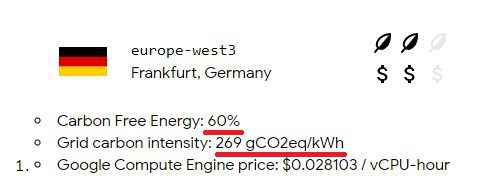How to detect the failure of a website?
If one day you are confronted with the drop in performance or the inaccessibility of a website, instead of contacting your access provider, you can first consult this site, it will give you in real time the reports of connection incidents made by the Internet users (This is only valid for the most popular sites).
How to prevent these failures when managing a website?
If you manage a website, you normally know the main regions and zones of origin (i.e. part of a continent or country) where your visitors come from.
With Google Cloud (other major cloud platforms also offer this service) you can choose the region and zone where your resources are hosted.
Choosing a region and a zone is important for two main reasons:
Anticipate outage management
Spreading your resources over several zones and regions means that you are not dependent on a single storage zone in the event of an interruption. If a zone becomes unavailable, you can transfer traffic to another zone in the same region to keep your services running.
Enable lower network latency
For example, if your region (well, the one where your service users come from) is Northern Europe and you want to avoid latency zones, you can choose a region or zone close to your service point. For example, if your customers are located in Germany, you can choose a primary zone in the same region (Western Europe) that is close by, or you can choose a region (other part of Europe) and a back-up zone that are also close by.
In the case of Germany, as you can see in the screenshot below, Google will suggest you to choose Belgium and Finland (if you give as much importance to three criteria: Latency, CO2 emission and price).


















